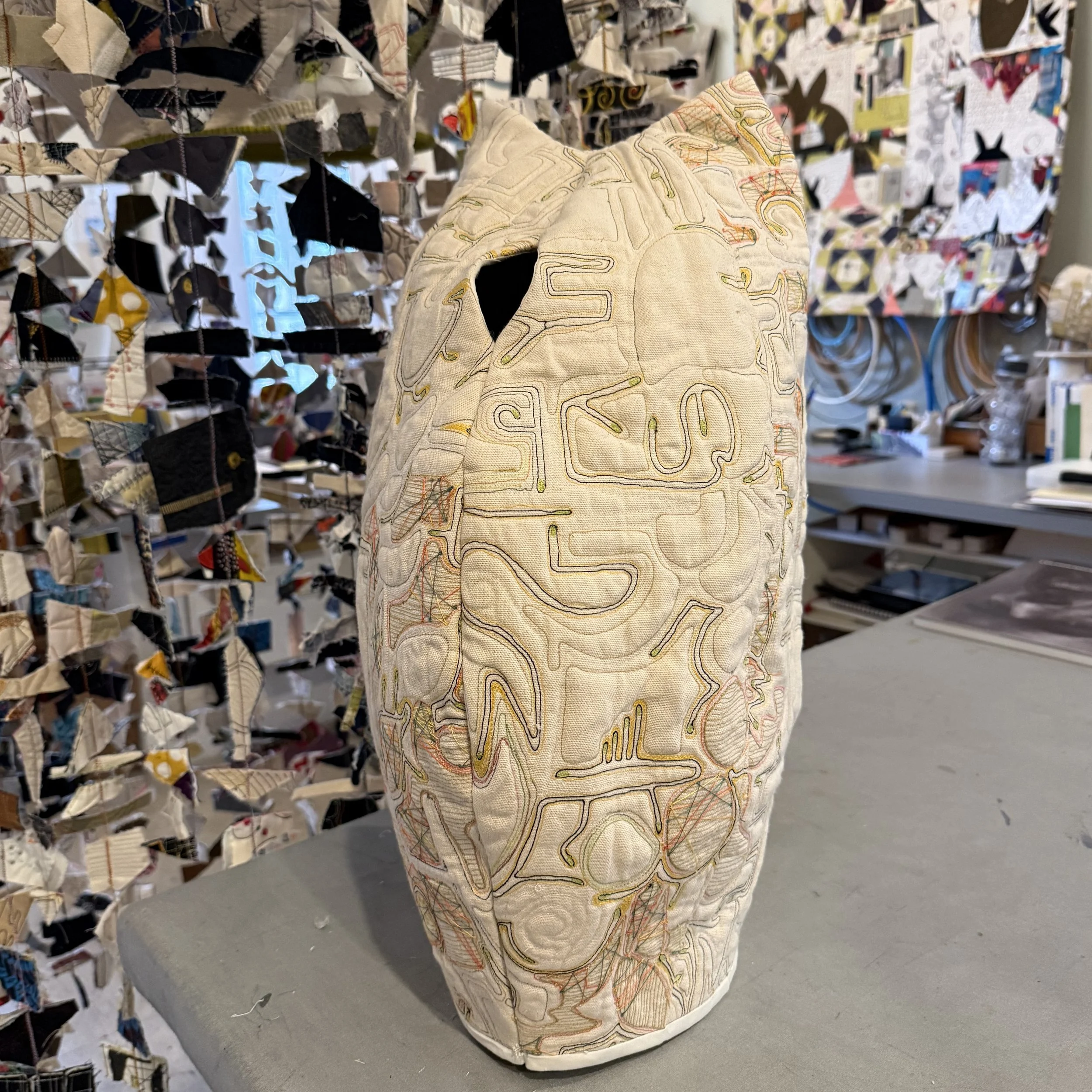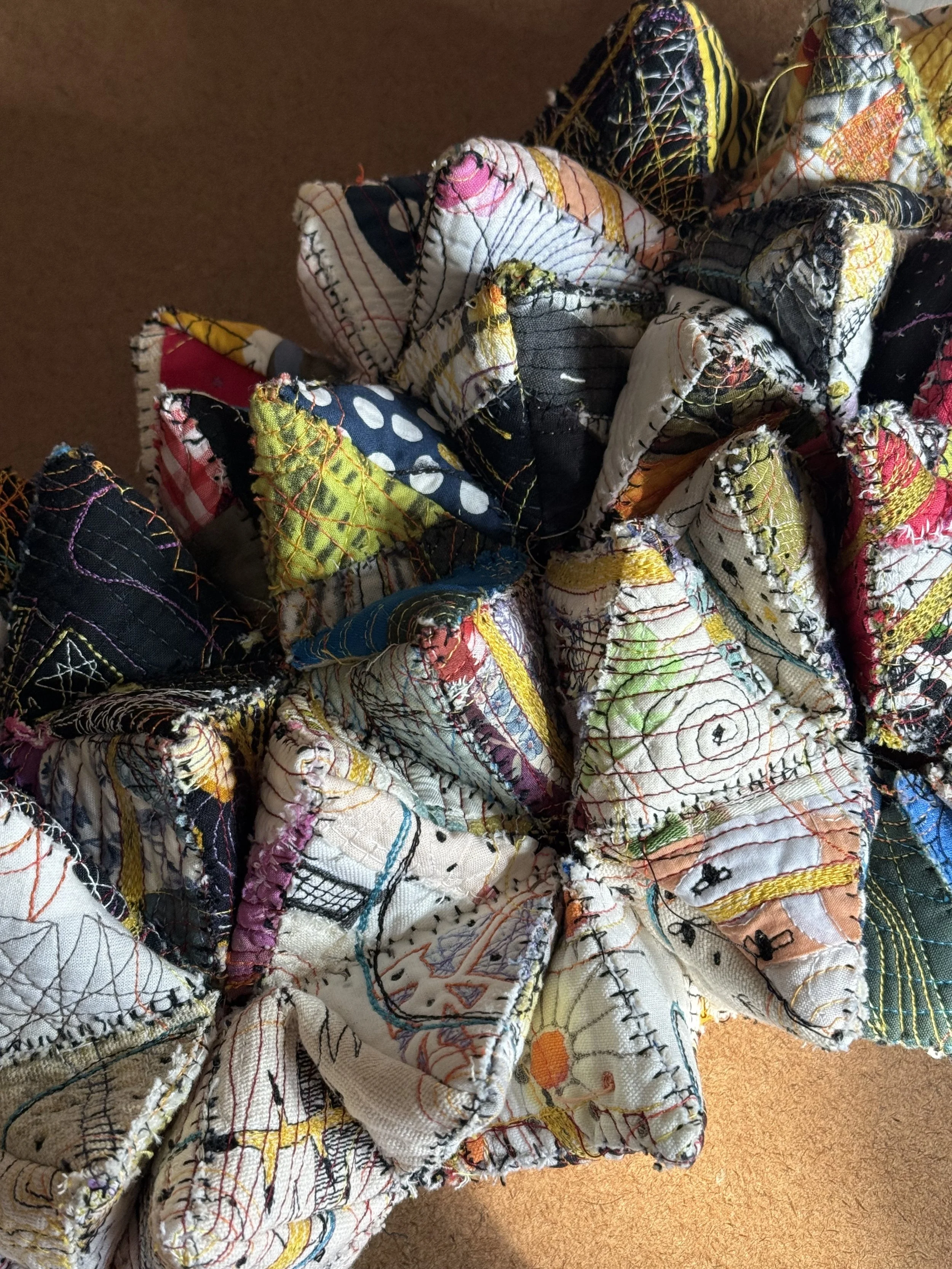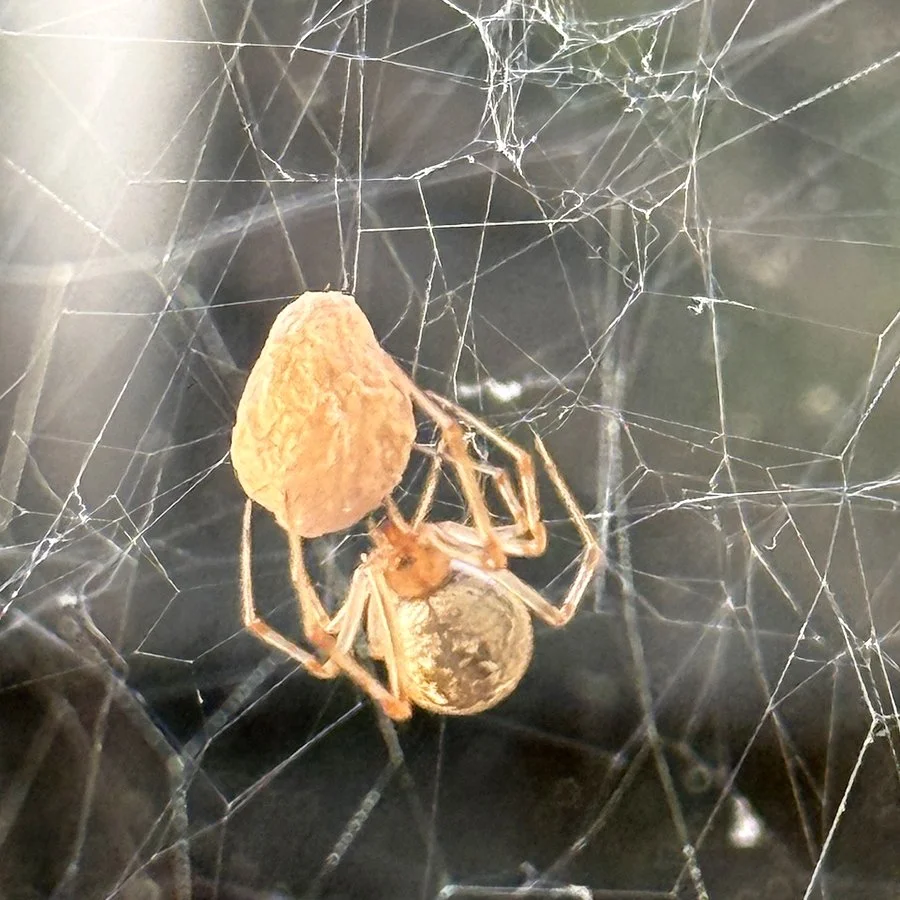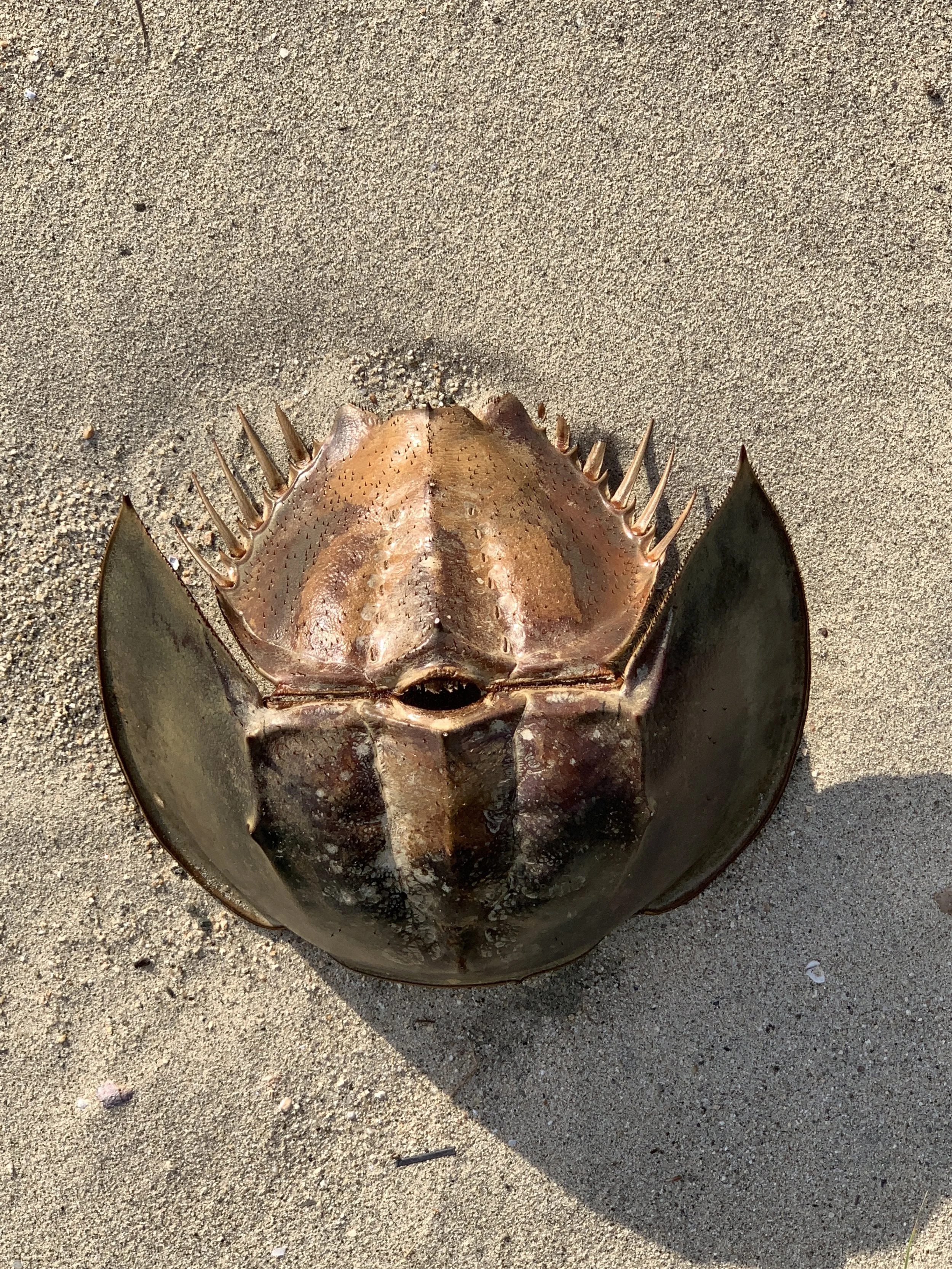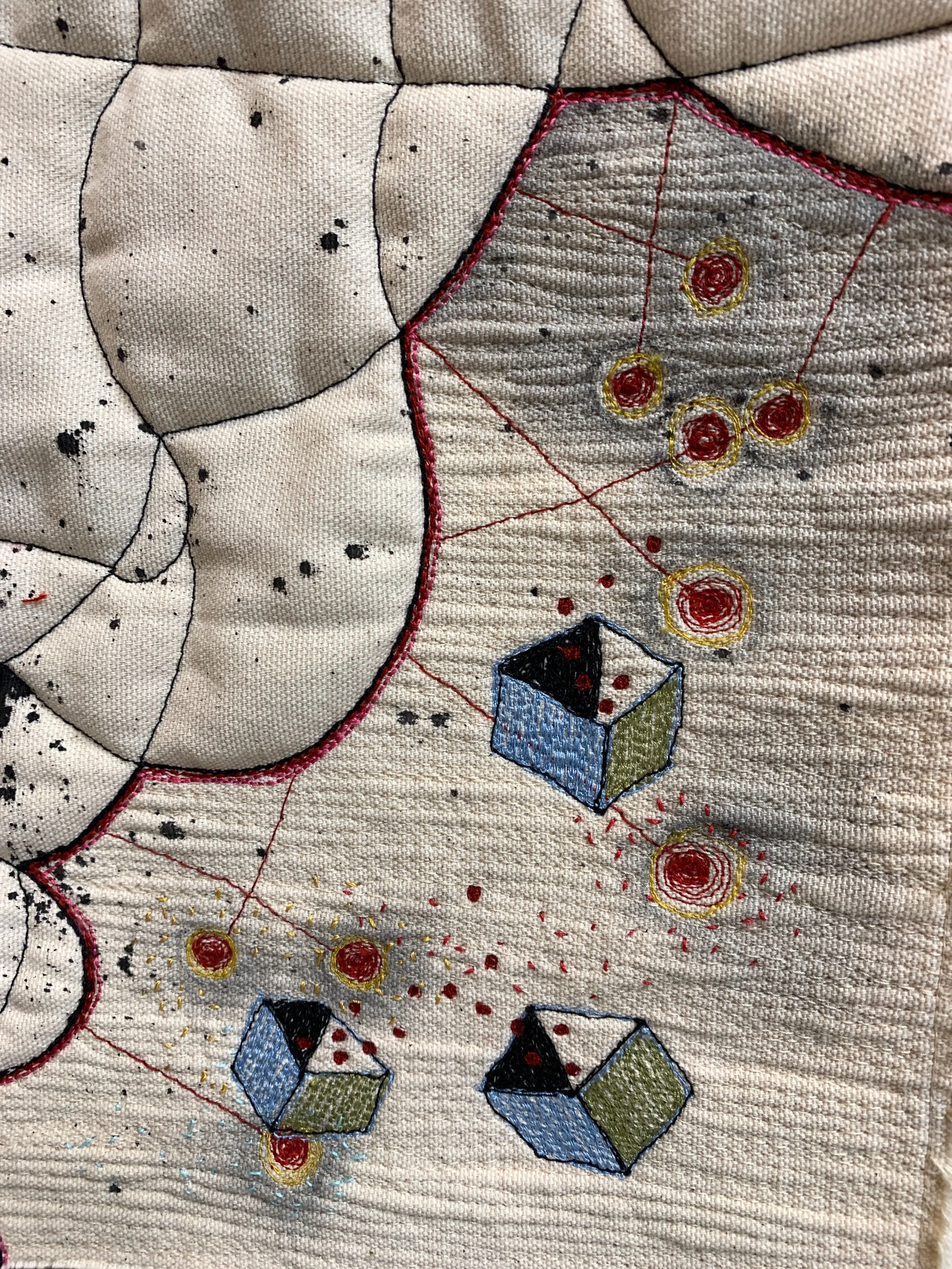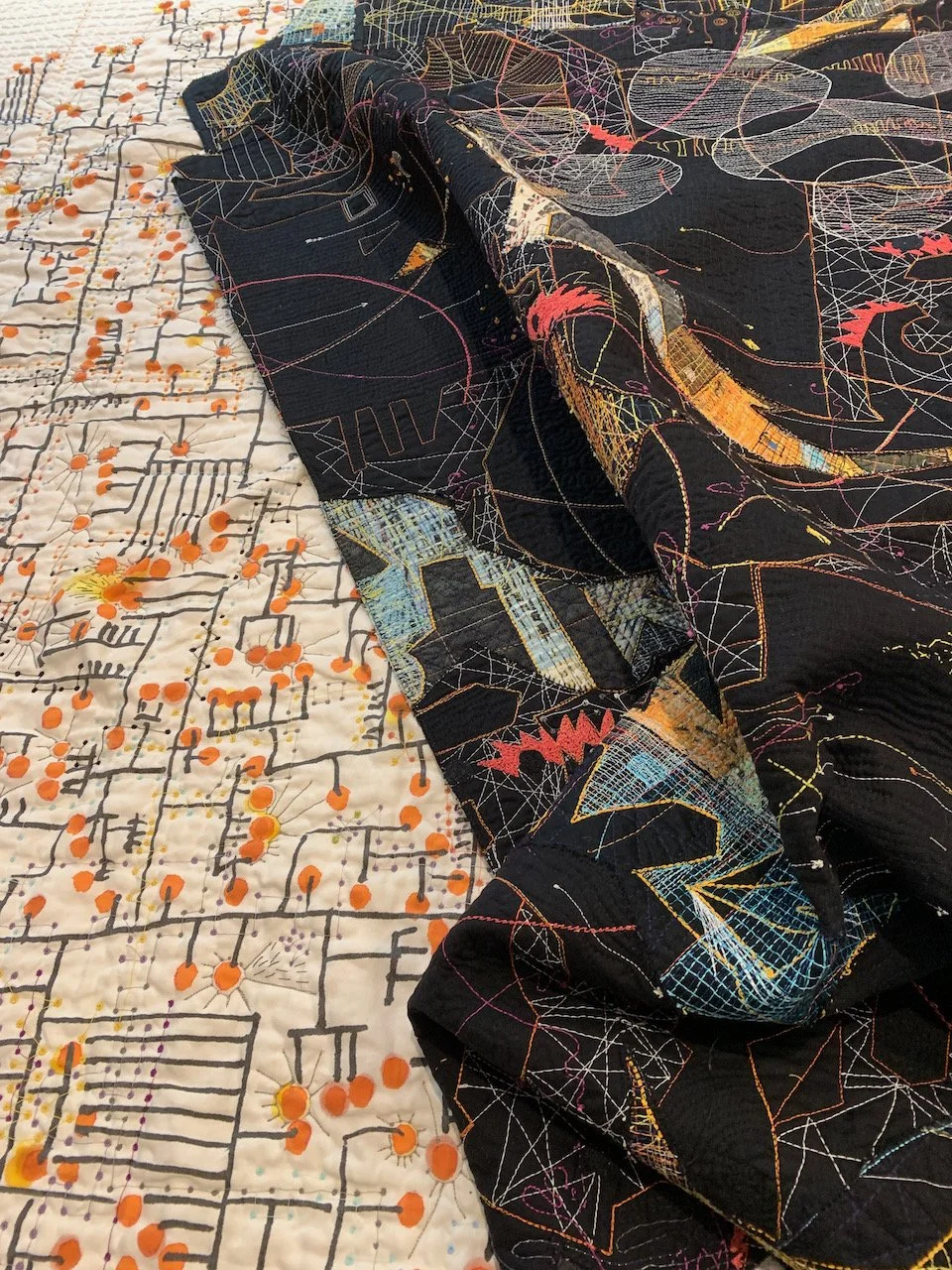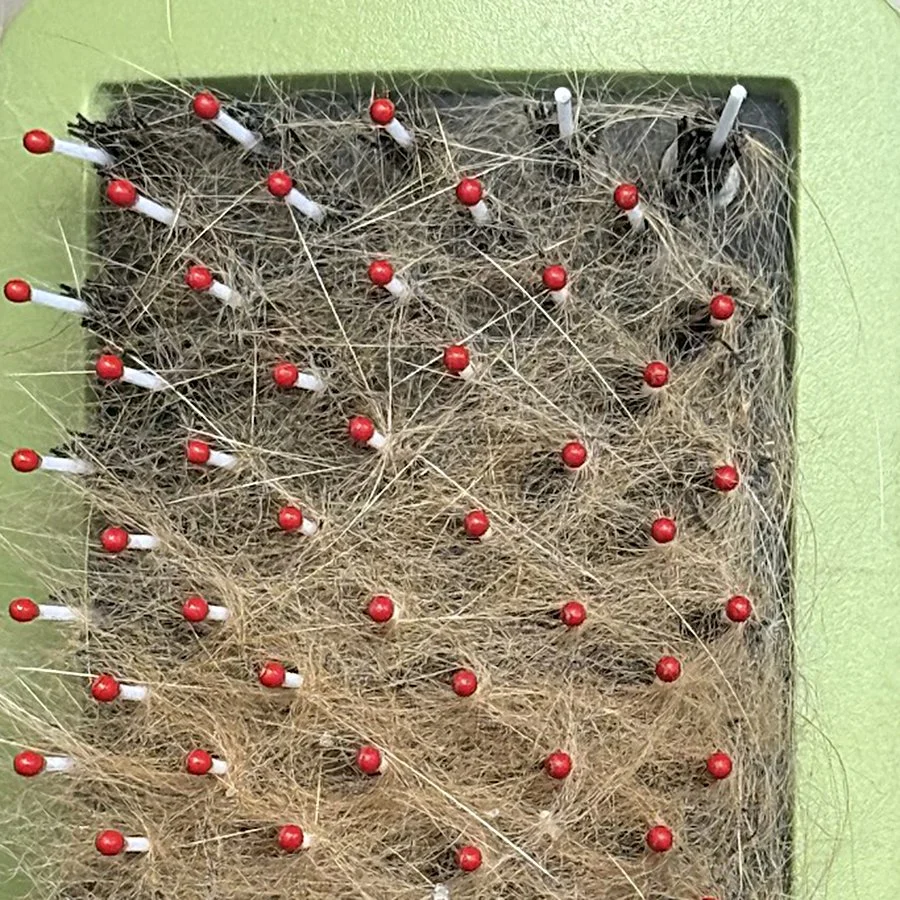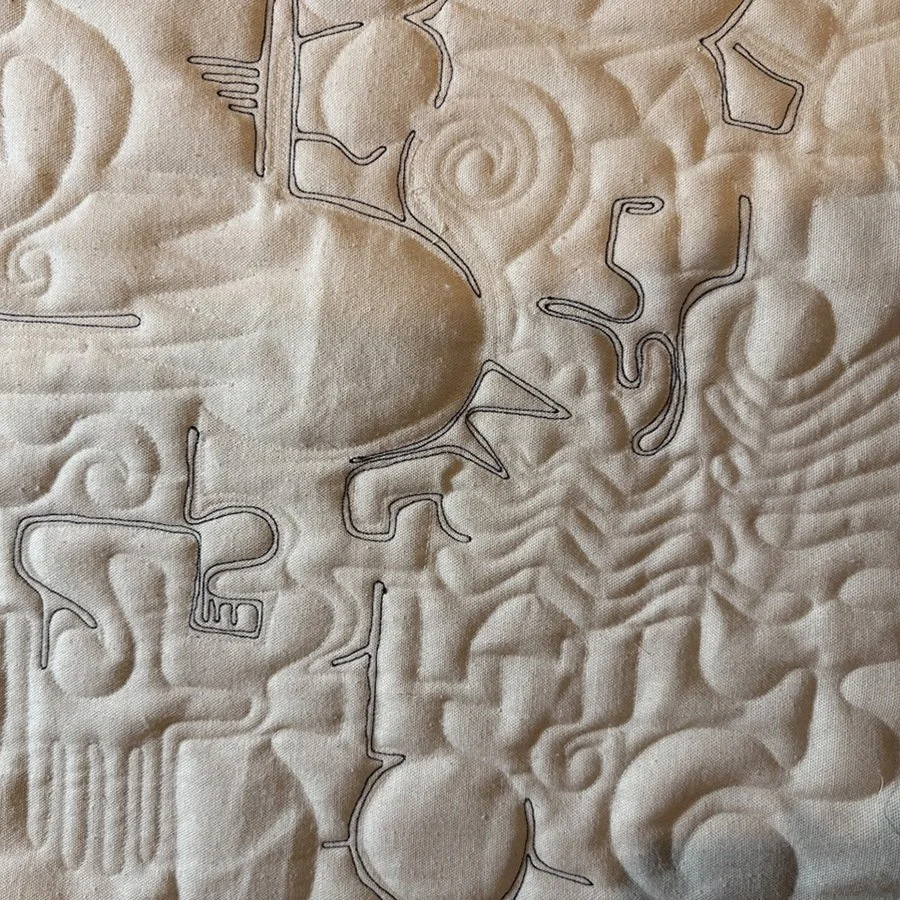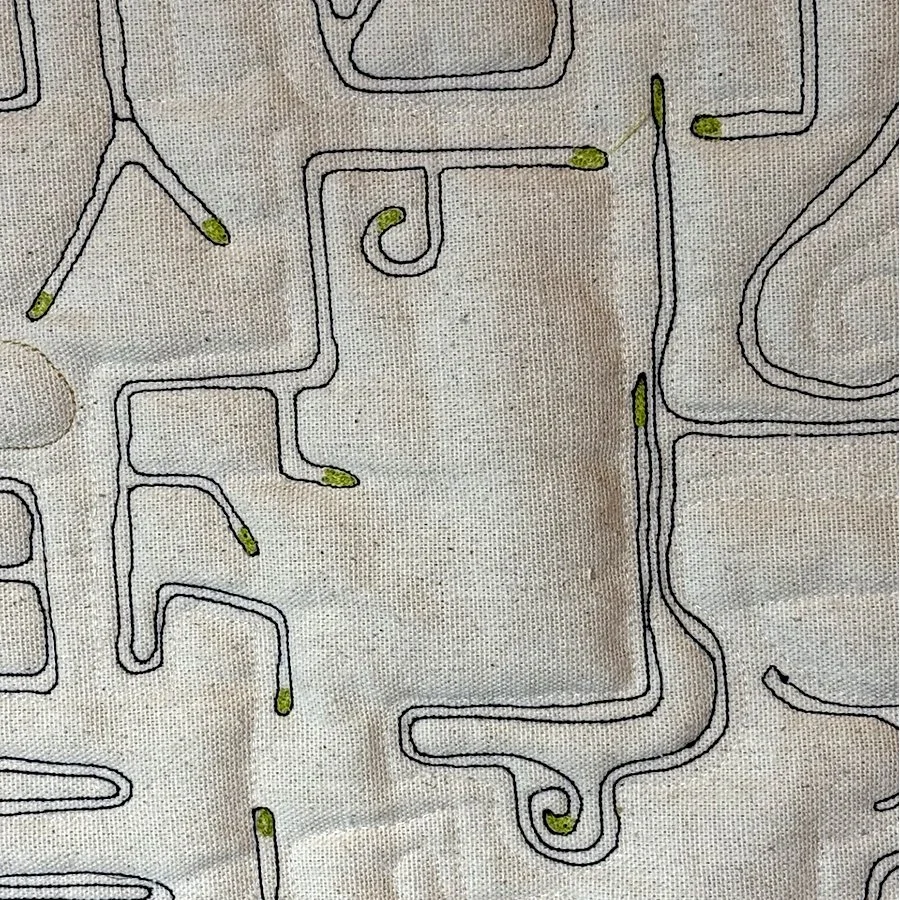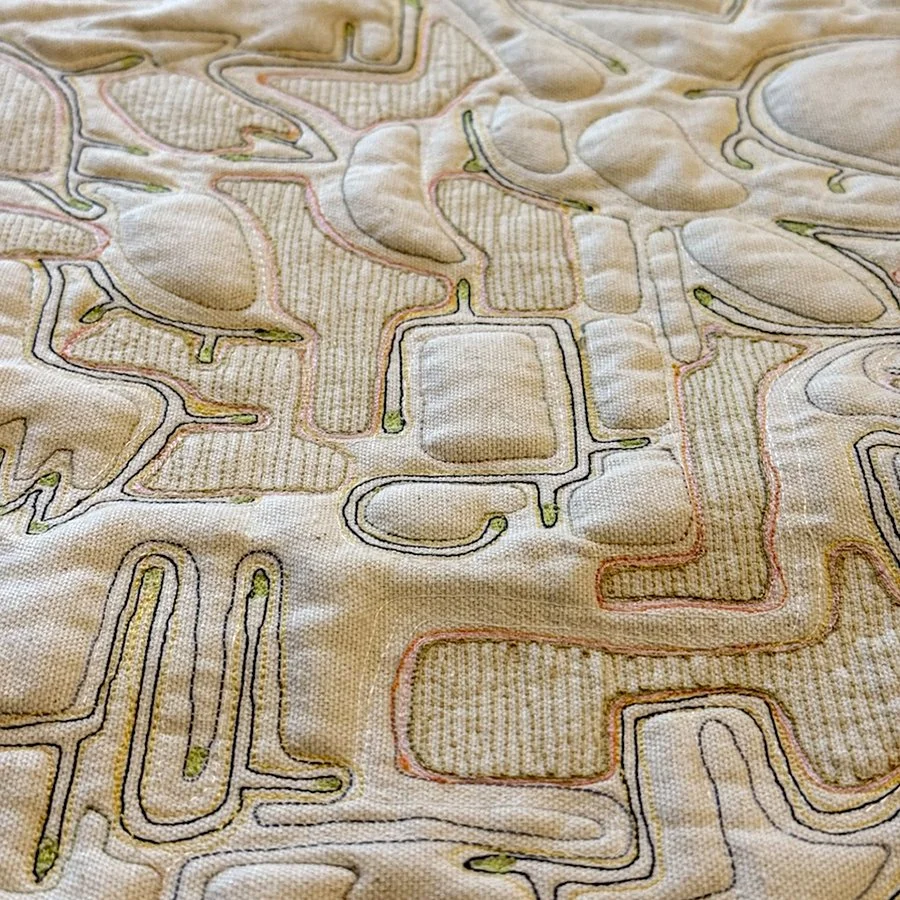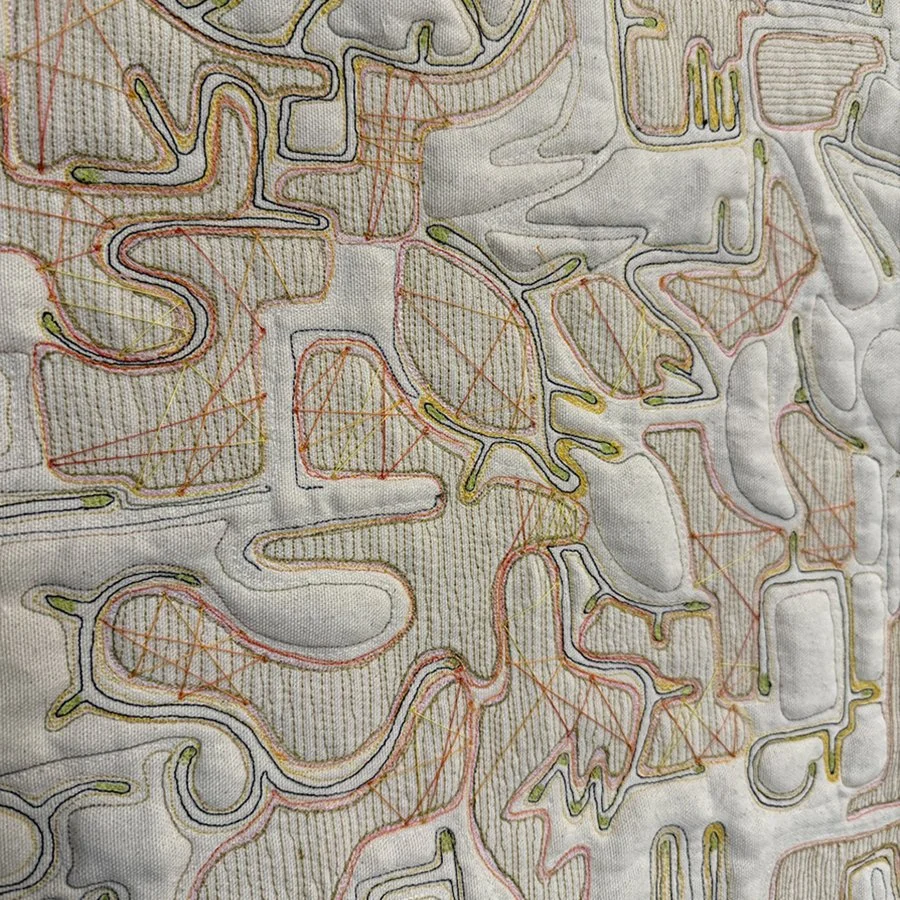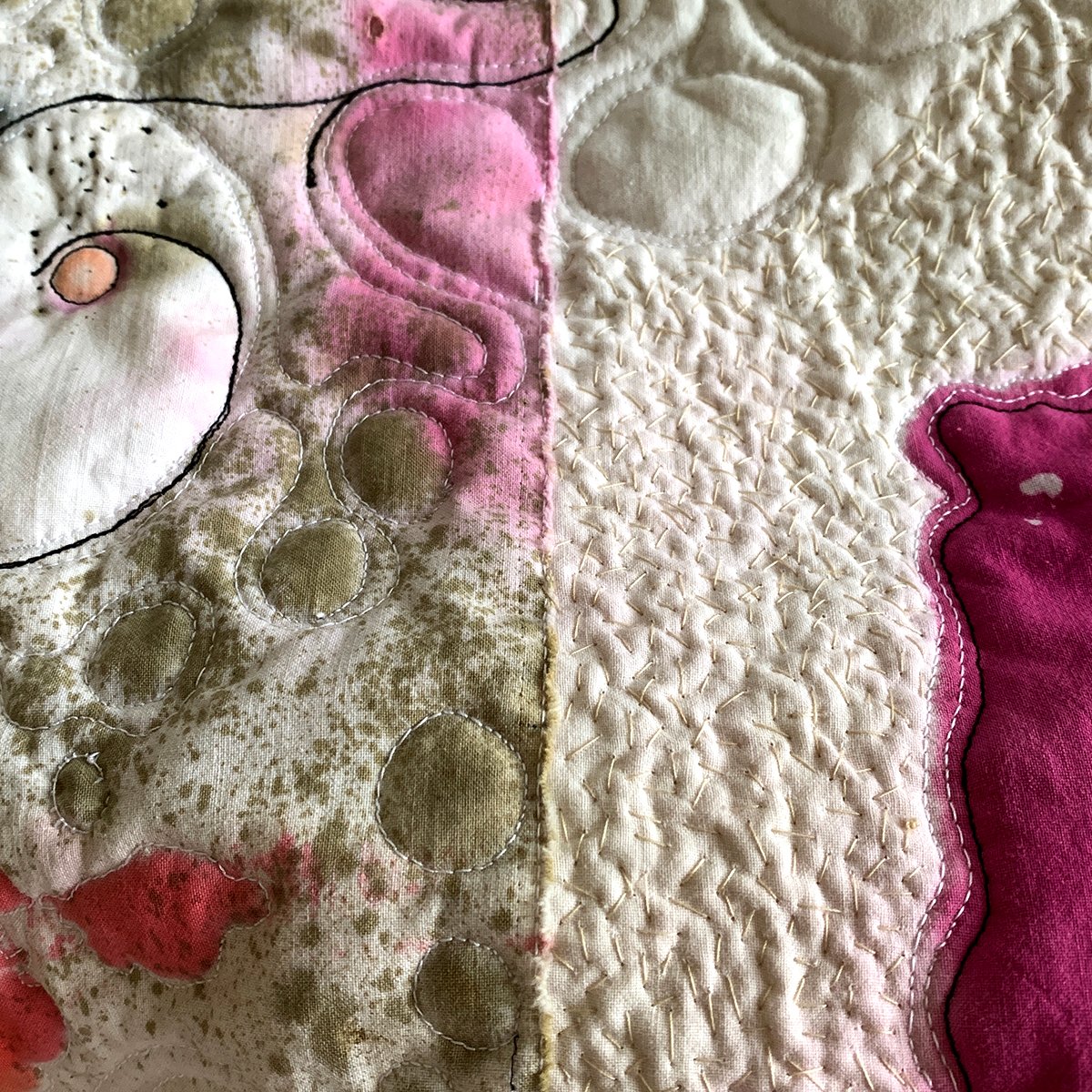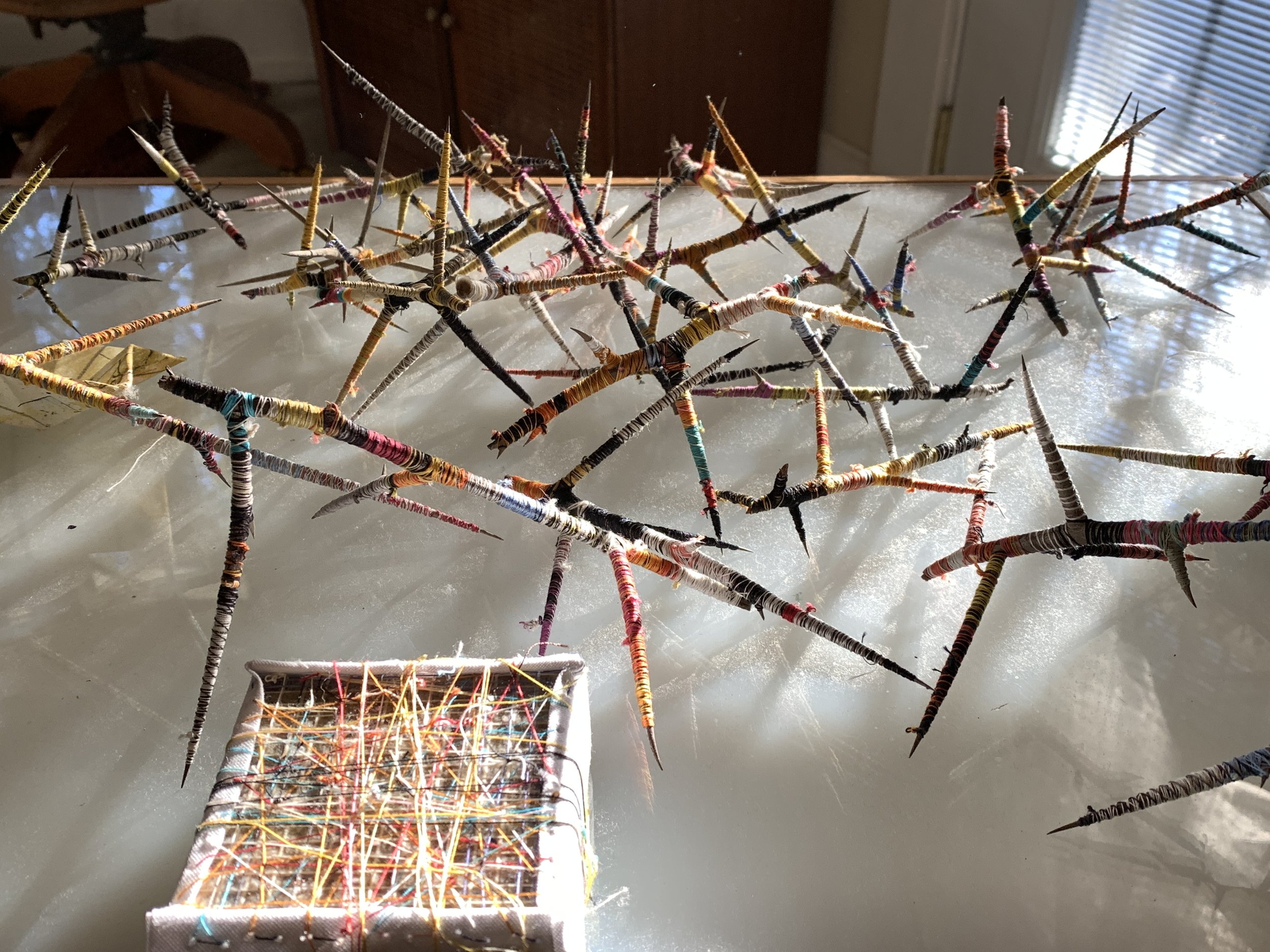There is a spider and her web in our kitchen window caught between the storm window and the window into the house. I have been watching her all summer.
She seems to be self sufficient and very busy. Food shows up. She builds more web. There are these egg-like shapes that she sculpts and tends. I wonder if they will hatch. Maybe they are mini pantries for meals in the future. I debate about removing the storm window so that she can escape but then I wonder how she got there in the first place. There must be an exit. She chooses to put on this show in the safety of her enclosure. I feel that way sometimes.
I am fascinated by webs and geometry. My phone has hundreds of found textures in its catalog. I never quite know when one of these inspiration shots will show up in my work. This week the webs I have witnessed started showing up in my stitching.
Here’s a series of shots of this work in progress that shows that discovery process.
I often talk about being in process when making art. If I can divorce myself from my expectations the work becomes more honest and spontaneous. Without the expectation of a successful finished product I learn more. Explore more.
I hope that house spider will last a long time.
